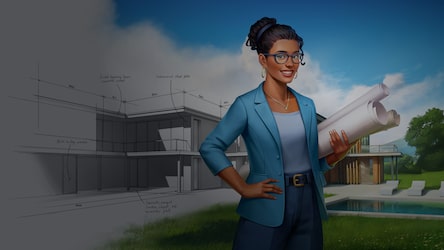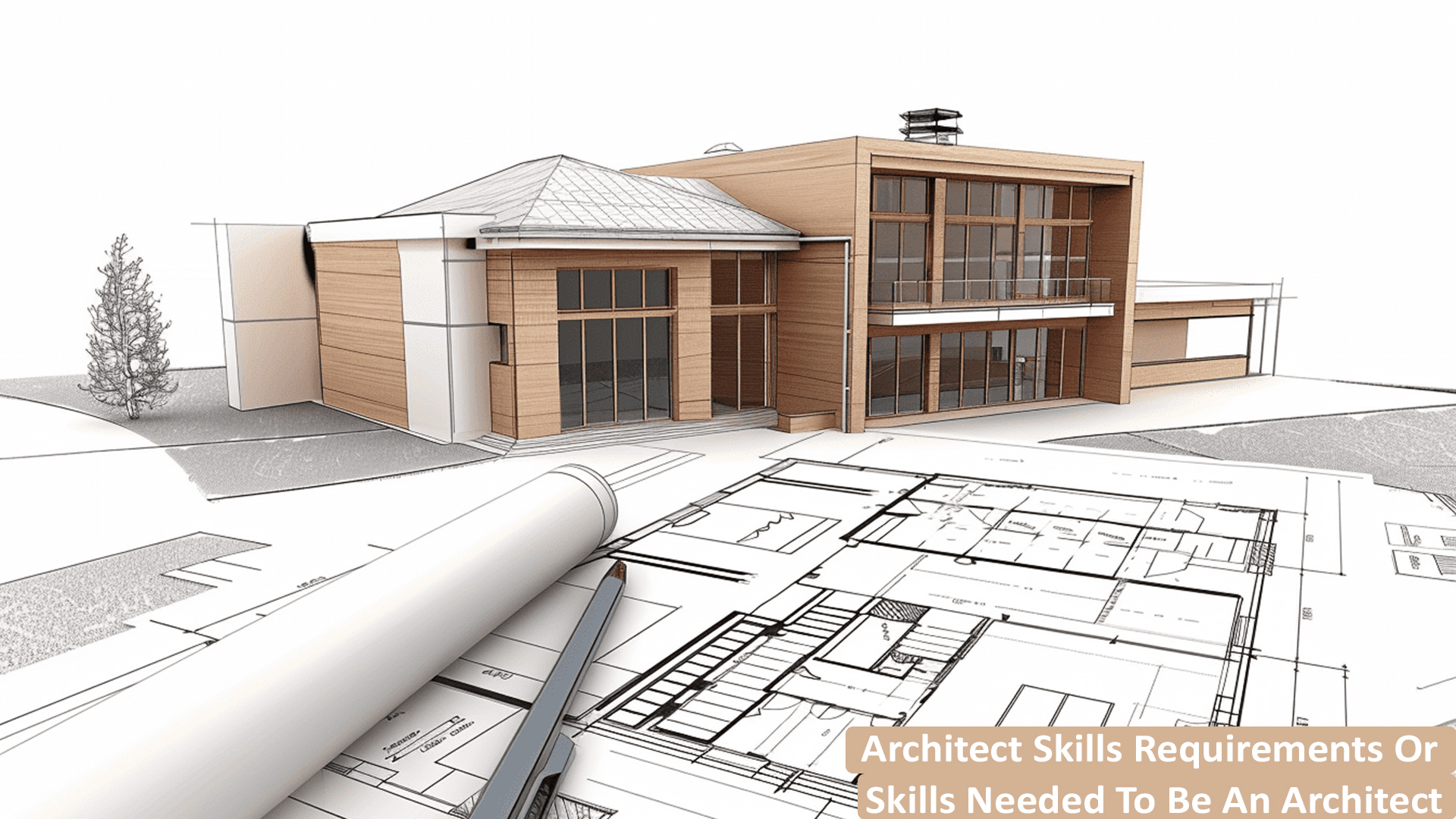Recognizing the Diverse Profession Paths Available for Aspiring Architect
As a hopeful Architect, you have a globe of profession courses waiting for you. Each path provides unique difficulties and opportunities to apply your creative thinking and technological know-how. Whether you're attracted to typical design or the subtleties of lasting design, there's a particular niche that aligns with your rate of interests. Recognizing these varied options can shape your expert trip, however which direction will you select to discover initially?
Typical Architecture: Designing Frameworks and structures
Traditional style focuses on developing structures and frameworks that mix capability with aesthetic charm. As you explore this field, you'll value the detailed equilibrium between form and objective. You'll discover to attract ideas from historic designs, incorporating components like proportion, products, and craftsmanship. Your layouts can show cultural heritage, showcasing local practices while satisfying contemporary needs.
You'll establish abilities in drafting, model-making, and website evaluation, allowing you to imagine and communicate your concepts efficiently. Engaging with customers, you'll require to recognize their vision and translate it right into practical layouts.
In addition, developing codes and sustainability methods are vital in your job, guaranteeing your frameworks are eco friendly and safe. As you grow in your occupation, you'll find opportunities in property, industrial, or perhaps repair tasks, each offering distinct challenges. Welcoming standard architecture leads the method for a meeting job that admires the past while forming the future.
Urban Planning: Forming Areas and Public Spaces
As a hopeful Architect, you can play an important function as an urban planner, transforming exactly how neighborhoods interact and work. By using neighborhood engagement strategies, you'll guarantee that residents have a voice in shaping their environment. And also, incorporating sustainable style principles will aid develop rooms that not only satisfy today's requirements but likewise safeguard the future.
Function of Urban Planners
While several might think about engineers as the single visionaries behind structures, metropolitan coordinators play a crucial function fit the broader landscape of communities and public rooms. They assess land use, zoning laws, and community requires to create sustainable atmospheres that enhance quality of life. By collaborating with numerous stakeholders, you'll help design parks, transport systems, and domestic locations that advertise social interaction and ease of access. Urban planners likewise focus on ecological considerations, guaranteeing that developments incorporate green rooms and assistance biodiversity. Your competence in spatial design and community characteristics permits you to imagine future development while preserving social heritage. In this vital role, you'll directly influence how people experience their environments, making every job a chance for positive adjustment.
Neighborhood Engagement Methods
Reliable area interaction methods are essential for metropolitan organizers to ensure that the voices of locals are heard and valued in the preparation procedure. To cultivate purposeful discussion, you need to focus on open discussion forums and workshops where area participants can reveal their concepts and issues. Usage surveys and social media sites to get to a wider audience, making sure varied perspectives are consisted of. Collaborating with neighborhood companies can boost count on and promote much deeper connections. It is essential to offer clear details regarding decision-making processes and suggested tasks, allowing residents to really feel enlightened and equipped. By actively integrating and paying attention responses, you'll create rooms that reflect the community's demands, eventually resulting in more sustainable and effective urban settings. Embrace openness and constant dialogue for lasting effect.
Sustainable Layout Concepts
When designing city spaces, including lasting design concepts is vital for developing settings that prosper both ecologically and socially. You must begin by concentrating on power performance, making use of materials that lower waste and advertise recycling. Think about integrating green spaces, like parks and yards, to enhance biodiversity and improve air top quality. Advertising walkability and public transportation can minimize dependence on autos, cultivating a healthier area.
Designing with water preservation in mind is also key-- assume regarding rainfall gardens and absorptive surface areas to manage stormwater. Including community participants throughout the preparation process assurances that the spaces you produce fulfill their requirements and encourage social interaction. By welcoming these principles, you'll add to vibrant, lasting metropolitan landscapes that profit everyone.

Landscape Design: Creating Lasting Exterior Settings
As you check out landscape architecture, you'll uncover vital style principles that develop beautiful and functional exterior spaces. Lasting methods play a crucial function in making sure these environments grow while lessening ecological effect. Plus, you'll discover a variety of occupation opportunities that allow you to make a genuine distinction in exactly how individuals communicate with nature.
Style Concepts in Landscape
Understanding layout concepts in landscape style is important for developing lasting exterior atmospheres that integrate with nature. You'll require to ponder components like equilibrium, percentage, and range to ensure your styles feel cohesive and welcoming. In addition, pay focus to seasonal changes, designing with products that match the surroundings year-round.
Sustainable Practices Overview
Sustainable techniques in landscape design not only focus on appearances yet additionally prioritize environmental health and resource conservation. By integrating native plants, you boost biodiversity and lower the requirement for chemical fertilizers and pesticides. Implementing reliable watering systems aids save water and reduces drainage, shielding neighboring environments. You can design areas that advertise soil health, such as practicing and utilizing organic materials permaculture principles. In addition, incorporating eco-friendly facilities, like rain gardens and porous pavements, aids in stormwater administration and decreases metropolitan warm. You add to a much healthier earth and supply rooms that promote area connection when you create outdoor atmospheres with sustainability in mind. Eventually, these techniques guarantee your designs profit both individuals and the setting for several years to find.
Career Opportunities Exploration
With a strong structure in lasting practices, landscape architecture supplies a variety of profession paths that allow you to make a purposeful effect on the setting. Urban coordinators frequently collaborate with landscape designers to create eco-friendly rooms in urban settings, enhancing city livability. If you're passionate concerning education, take into consideration coming to be a landscape style teacher, inspiring future generations.
Lasting Style: Concentrating On Eco-Friendly Practices
As you discover your career in architecture, accepting environmentally friendly practices can set you apart in a competitive area. Sustainable layout concentrates on developing buildings that minimize environmental effect while boosting resident health. By integrating renewable products, energy-efficient systems, and lasting structure strategies, you'll add to a greener future.
Beginning by gaining knowledge of environment-friendly accreditations like LEED or BREEAM, which can reinforce your credentials. Think about how all-natural light, Discover More ventilation, and thermal efficiency can optimize layout. Work together with engineers and environmental specialists to innovate remedies that decrease waste and preserve resources.
Don't forget the relevance of area participation-- engaging local stakeholders can influence layouts that integrate with the setting. As clients progressively prioritize sustainability, your proficiency in environment-friendly techniques will certainly not only attract projects but also satisfy your enthusiasm for liable design. Welcome this crucial aspect of the profession, and watch your occupation prosper.
Historical Conservation: Securing and Bring Back Social Heritage
While you begin on your building trip, think about the necessary function of historical preservation in maintaining our cultural heritage. This area concentrates on the defense and restoration of considerable structures, websites, and frameworks that tell the tales of our past. By engaging in historic preservation, you'll assist protect the architectural heritage that forms neighborhood identity.
As a historical preservation Architect, you'll assess historical value and examine the condition of frameworks. You'll work very closely with conservationists and chroniclers to guarantee genuine remediation techniques are used. This profession course enables you to mix imagination with study, allowing you to develop solutions that respect initial products and workmanship.
Your job not just contributes to sustainability by recycling existing buildings but also fosters a feeling of satisfaction within neighborhoods. Welcoming this course will assist you become a guardian of history, maintaining the stories and aesthetics that improve our lives.
Inside Architecture: Enhancing Indoor Spaces
Historical conservation and interior architecture both share a dedication to enhancing the developed setting, yet they focus on different facets. While historic preservation highlights keeping a framework's cultural and historic value, interior design absolutely nos in on optimizing indoor areas for capability and aesthetics.
As a hopeful Architect, you'll discover that indoor architecture allows you to blend click for more imagination with technological abilities. You'll make spaces that not only look good but likewise promote comfort and effectiveness. This area entails recognizing just how light, color, and products connect within a room, influencing state of mind and use.
You'll work with numerous tasks, from household homes to business workplaces, making certain that each setting fulfills the demands of its owners. By focusing on customer experience, you can change insides right into motivating and practical spaces, making a considerable effect on just how people connect with their environments. Welcome the possibility to improve indoor environments and form the method people work and live.
Industrial Design: Combining Functionality With Looks
Commercial style plays a vital function in creating products that seamlessly mix appearances with capability, making sure that what you use day-to-day is not just visually appealing yet likewise practical. As an ambitious Architect, you might immerse on your own in this field, concentrating on developing everything from furnishings to consumer electronic devices. Your work involves comprehending user demands, materials, and manufacturing processes, allowing you to produce cutting-edge solutions that enhance day-to-day experiences.
In industrial layout, you'll typically collaborate with engineers, marketing professionals, and manufacturers, guaranteeing that your layouts are not only lovely but likewise practical. You'll find out to balance type and feature, prioritizing functionality without giving up design. By honing your skills in laying out, 3D modeling, and prototyping, you'll be well-equipped to bring your ideas to life. This occupation course offers a dynamic environment where imagination fulfills usefulness, making it a satisfying choice for architects thinking about shaping the items of tomorrow.
Often Asked Questions
What Educational Qualifications Do I Need to Become an Engineer?
To come to be a designer, you'll require a specialist degree in style, generally a Bachelor's or Master's. Additionally, you'll need to complete a teaching fellowship and pass the Architect Registration Exam to exercise legally.
Exist Accreditation Needs for Different Building Occupation Paths?
Yes, there're certification needs for various building paths. Architect. You'll require to pass examinations, full internships, and sometimes go after specialized training, relying on your selected emphasis, like landscape architecture, city design, or historical preservation
What Software Program Abilities Are Important for Engineers Today?

How Can I Gain Practical Experience While Researching Design?
You can gain functional experience by interning at architectural firms, getting involved in style competitors, volunteering for area projects, or collaborating with schoolmates on real-world projects. These possibilities enhance your abilities and build valuable links in the industry.
What Work Opportunities Exist Outside Standard Architecture Firms?
You can check out different work opportunities outside typical architecture firms, like city planning, indoor design, landscape style, construction administration, actual estate development, or perhaps roles in sustainability consulting. Each deals unique difficulties and incentives.
Whether you're attracted to conventional design or the nuances of sustainable style, there's a particular niche that aligns with your rate of interests.When making urban areas, incorporating sustainable style concepts is critical for creating environments that thrive both ecologically and socially.As you discover landscape go to this website style, you'll uncover essential design concepts that develop practical and beautiful outdoor areas.Understanding design principles in landscape design is necessary for developing sustainable exterior atmospheres that balance with nature.In commercial style, you'll usually team up with designers, marketers, and makers, making sure that your styles are not only gorgeous but also possible.